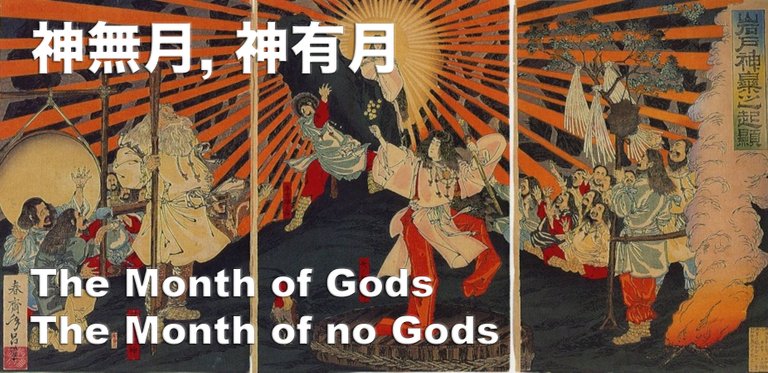
I was just glancing through my saijiki (haiku season word encyclopedia) and was reminded of an interesting story you all may enjoy. On the traditional calendar, this would have been the tenth month right now, and the tenth month on the old calendar has some interesting folklore surrounding it.
The tenth month was called Kaminazuki (神無月) in most of the country, except in Izumo where it was called Kamiarizuki (神有月). What do these two words mean and why the different name? That's a fun story. Modern scholarship ruins it a bit, but let's cover it anyway because everyone in Japan knows this story and, like I said, it's fun.
Meeting of the Gods
Story time!
It is said that in the tenth month all the Shinto gods across Japan travel to Izumo where they discuss plans for the next year. In some tellings Amaterasu, the head goddess of Japanese mythology, stays at Ise Jingu in Mie and doesn't make the trip. I suppose that's one advantage of being top dog: you get to skip boring meetings! But in other tellings she also goes to Izumo. In these versions, she is the last to arrive and the first to leave.
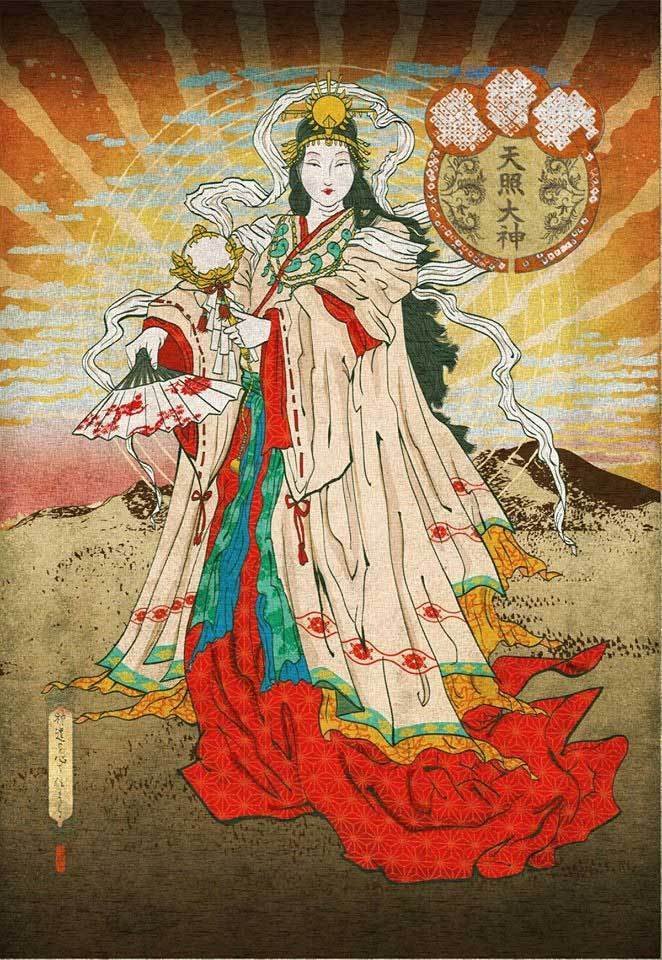
Amaterasu: The main boss
Because the gods are absent from most of Japan, the name of the month is thus Kaminazuki, "The Month Without Gods" while in Izumo it is Kamiarikuki, "The Month with Gods".
Now, as I mentioned above, modern scholarship tells us that is not correct. I'll get to that in a bit. But first, let's learn a little about Izumo.
About Izumo
Izumo is near the very eastern tip of Honshu, the main island of Japan.
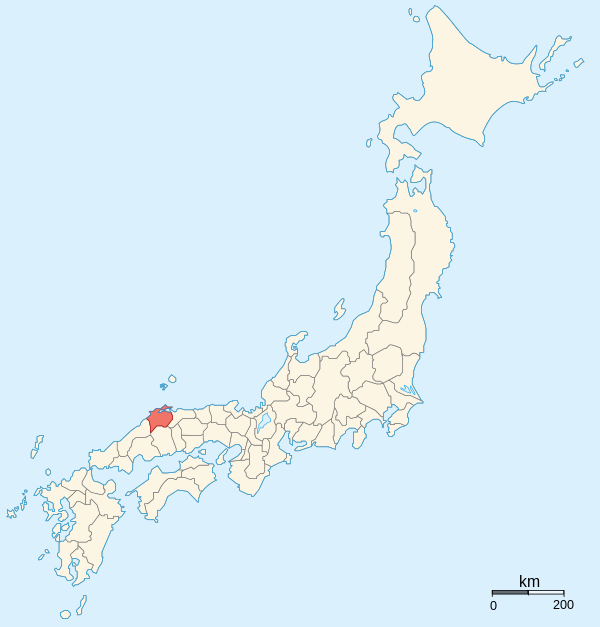
Izumo Shrine is one of the more important shrines in the country, said to be the place where Ōkuninushi is enshrined. Ōkuninushi is the god of happiness and marriage, making Izumo shrine a very popular destination for couples.
Ōkuninushi would later be combined with the Buddhist deity Mahākāla, the Buddhist version of the Hindu deity Shiva, into Daikokuten, the god of fortune and wealth. In this form we can see him all over Japan, especially around New Years when he and the other Seven Lucky Gods visit.
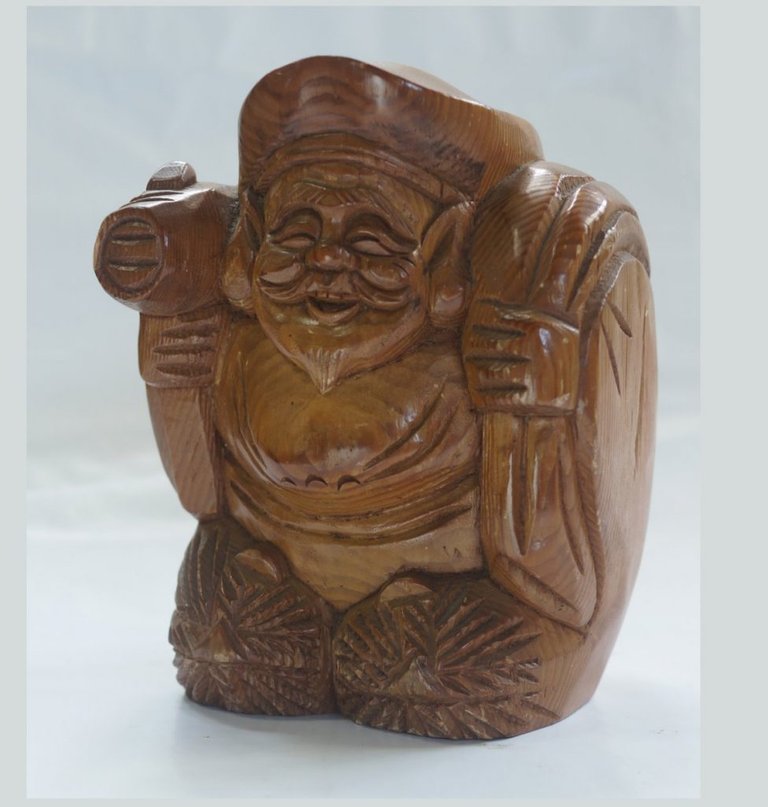
Daikokuten is a pretty chill guy
Ninigi, grandson of Amaterasu, also came down from heaven at Izumo. He brought the three sacred treasures with him (the sword, the jewel, and the mirror) and is great-grandfather to the first emperor, Emperor Jimmu.
Susanoo, the younger brother of Amaterasu, also came down to Izumo and had a few adventures after being banished from heaven for causing all kinds of trouble. He was the one who found the sacred sword that Ninigi would later bring.

Susanoo, have a staring contest with a dragon
In actual history Izumo most likely was occupied by another tribe which was conquered by the Yamato State; as a result the Izumo mythologies combined with the Yamato mythologies, the end result of which was Izumo became a pretty important place in the resulting combined mythology.
Anyway, modern historians tell us that Kaminazuki (神無月) actually means "Month of Gods", not "Month Without Gods", because the kanji 無 is only being used for the sound na and not for the meaning "without". Later generations didn't realize this and misinterpreted the name and made up the story of god meeting during the month to explain it. This kind of false etymology of words is pretty common, so we can easily believe the historians when they tell us this. Still, the folk story is more fun!
One More Thing
Many places where you might read the above story will call Kaminazuki October. It's used as a traditional name for October within Japan too so this is fairly common. But this isn't quite true. While Kaminazuki was the tenth month on the old calendar, the old calendar started later than the current one, with New Years around Chinese New Year. As a result there is about a month difference between old dates and current dates, making Kaminazuki around now. To be exact, for this year the tenth month of the old calendar would be from 10/25 to 11/23. So... it's not necessarily incorrect to say Kaminazuki is October, but it's more correct to say it was a month on the lunar calendar that is around the end of October through most of November on our modern calendar.
I only nitpick because haiku season words still use the old calendar, so I deal with moving back and forth between the two calendars a lot.
Incidentally, both kaminazuki and kamiarizuki are season words for early winter (which is now using the old reckoning of seasons) as well as several alts including kannazuki ("month without gods") and kamisarizuki ("gods are gone"), kami no rusu ("the gods are absent") and kami no tabi ("the gods are traveling").
Pop Culture
So there you go, a fun little tale about this month. Like I said, this is very well known so pretty much everyone is aware of it. Sometimes it will be referenced in books or film. In fact, as I was searching around for photos for this post, I came across an anime that used the two names of the month. Interesting banner for it:
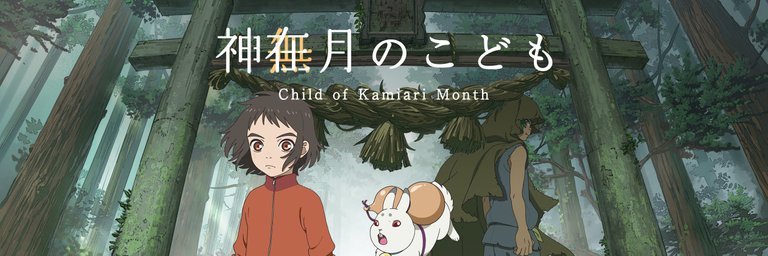
Anyway, enjoy the info!

❦


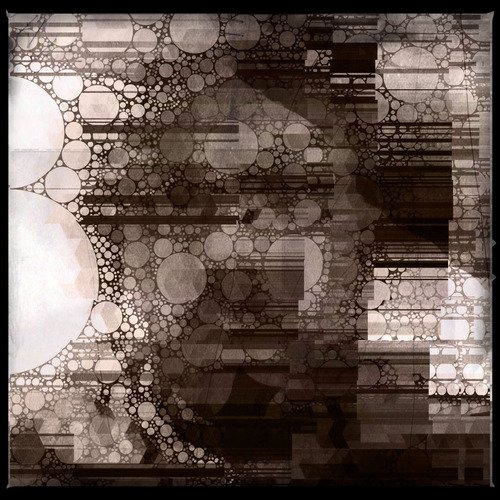 |
David LaSpina is an American photographer and translator lost in Japan, trying to capture the beauty of this country one photo at a time and searching for the perfect haiku. |
If this blog post has entertained or helped you, please follow/upvote/reblog. If you want to further support my writing, donations are welcome.
Oh, I guess it is rather difficult for western people to understand the difference between the old Chinese lunar calendar and the current calendar. In fact, it also took me--a native Chinese a long time to figure it out. I remember when I was a child, I was always very puzzled about it. It seems that there is a two-calender system in both China and Japan. And in China the old lunar calendar is normally used in the traditional/ancient festivals like Japan, such as Mid-Autumn Festival which falls on the eighth month of Chinese lunar calend, instead of August 5th.
All in all, very glad to learn about the interesting Japanese mythology! Thank you for your sharing it so much.
I think most Western people probably aren't even aware about the lunar calendar. I've actually met some young Japanese who don't even know about it. So it might be fading knowledge...
Anyway, I'm glad you enjoyed the article 😃
Lol I just learned something New today!
Use your new knowledge wisely 😃
!LOLZ
lolztoken.com
Cause they're always Kraken
Credit: reddit
$LOLZ
Are You Ready for some $FUN? Learn about LOLZ's new FUN tribe!
(1/8)@malos10, I sent you an on behalf of @dbooster
Your article is always interesting and very original. I like your anime information as well. I love the Amaterasu paintings and stories very much. I was inspired by these types of paintings and stories for my cut-paper artwork a lot.
Glad you enjoyed it!
I just learned today about the tenth month, that is Kaminazuki and Kamiarikuki. I hope I spelled it right and my clue would be a month without Gods in Izumo. Perhaps it is always fun to know facts about culture and tradition when history traces it back. What a nice content it is my friend.
Glad you enjoyed!
Great story. It is very important to set histories on the right path.
Absolutely!
Yay! 🤗
Your content has been boosted with Ecency Points
Use Ecency daily to boost your growth on platform!
Support Ecency
Vote for new Proposal
Delegate HP and earn more, by @dbooster.